Disclaimer: The information presented below is for general informational & educational purposes only. Always consult with animal professionals in case of specific concerns.
All the time, birds are a fascinating appeal to humans due to their awesome characteristics and diversity. This fact has remained true for centuries.
Some may be interested in a bird’s feathers or foot, but the beak indeed draws most animal lovers’ attention.
There are birds with extraordinarily long beaks that stand out from nature, and today, we’d like to introduce them to you.
All birds with long beaks have their own unique, fascinating features.
Let’s discover with me.
Bird With Long Beak: A Collection of Long-Beaked Species
These amazing animals will wow you with their eye-catching beaks:
Black Skimmer
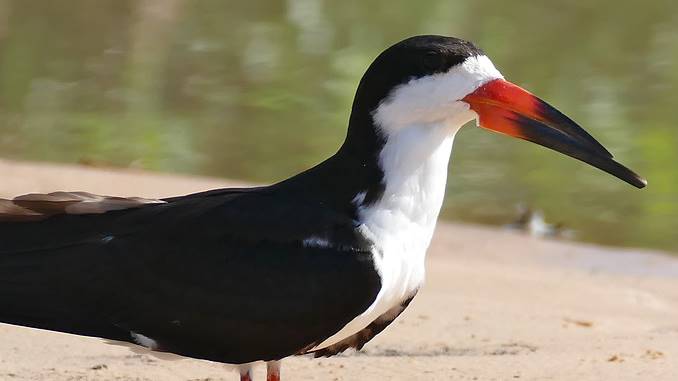
Black skimmers are a kind of seabird that share similar features to gulls. Their 3- to 4-inch beaks are their most outstanding feature.
It’s exceedingly sharp, with a mandible protruding underneath the bill’s upper half. The animals use this part for hunting their prey, but how do they do that?
They lean the beak’s lower half against the water surface, then catch fish or other organisms into their mouths.
Also, when you first see it, you’ll instantly notice the distinctive red feet matching their vibrant red-orange beak with a dark tip.
Toco Toucan
Toco Toucan is known as the largest toucan species. The average length of this animal’s beak is 7.5 inches; it originates from forests in South America.
People found them in semi-open regions, and many were surprised at how long their bright orange bills were. This part helps get things that sit far away.
These animals also use it to intimidate other smaller birds, scare predators away, and peel fruit skin. Another fantastic benefit is that they can adjust blood flow to the beaks to control the body temperature.
Toucans often tuck their bills under their feathers before hitting the hay. Hollow trees deserted by woodpeckers are their common living places.
Bald Eagle
A bald eagle symbolizes opportunity, strength, and boldness. The US public seal also uses the image of this animal as the logo of the organization.
Its earthy-colored feather highlights the white tail and head and that fascinating yellow-snared beak.
Bald eagles take advantage of the sharp bill to catch fish, becoming sharp predators. This animals with claws are powerful when diving and holding the water.
Sword-Billed Hummingbird
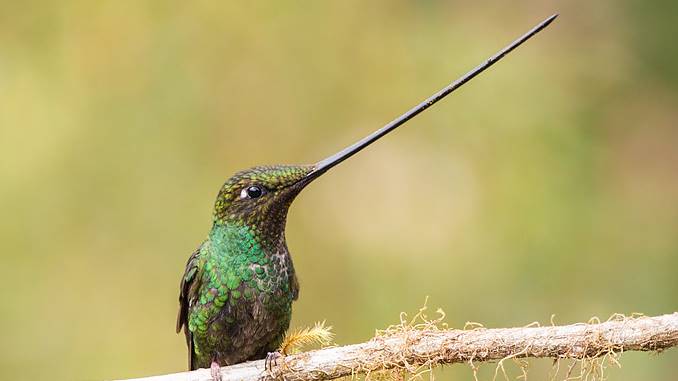
The only animal with a bill even longer than the body is the sword-billed hummingbird living in the North of the Andes Mountains.
The 3- to 4-inch bill structure enables the pet to eat nectar, like flowers, fuchsias, and passion flowers in the Datura genus.
These plants have very long corollas, which bury the sweet fruits deep into the flowers, making them too hard for other animals to get.
A Sword-billed hummingbird can easily earn a sweet dinner with an extraordinarily long’ natural tool.
Read more: What Does It Mean To See A Hummingbird?
Shoebill
When it comes to which bird has a long beak, we can’t skip out on this name: shoebill. This species inhabits swampy places around and in North-East Africa.
Its mouth is large, featuring a shoe shape, so people call it a ‘shoebill.’ The average width and length of a shoebill’s beak are four and nine inches.
It consumes big fish, such as catfish, lungfish, and eels. Sometimes, this pet also eats snakes, baby crocs, and lizards.
Its most distinguishing feature is the mouth, which is sharp, curved with pointy edges to attack its prey.
Long-Billed Curlew
Another bird with a long thin beak is the long-billed curlew. This species originates from North America and is a variety of the Scolopacidae genus.
Some people call it candlestick or sickle bird because of its sleek, long, candle-like beak.
Long-billed curlews primarily live in beaches, flooded fields, mudflats, tidal estuaries, wetlands, and agricultural areas.
They feed on eggs, spiders, caterpillars, beetles, grasshoppers, crabs, shrimp, earthworms, marine crustaceans, and insects.
Flamingo
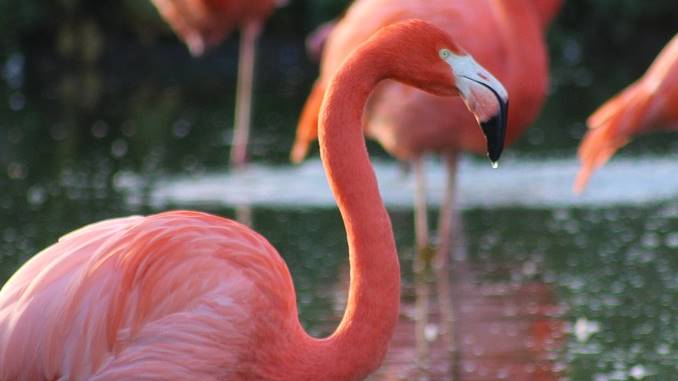
We’re so into this beautiful animal due to its vibrant pink color. You can find flamingos in Yemen and South Africa.
They inhabit alkaline environments, including estuaries, pans, and salty lakes across Africa.
Aside from the appealing feather color, what makes flamingos unique among other species is the bill length of five to seven inches.
This animals with webbed feet use their long beak to eat green-blue algae, but they sometimes consume small insects and crustaceans.
Hoopoe
Hoopoe, a native bird to Asia, Africa, and Europe, is renowned for its slender, sharp, extensive bill and spectacular crest.
Though its body mixes various earth-toned colors, like creams, blacks, dark browns, and cinnamon browns, the colors are naturally in aesthetically beautiful patterns, including zebra stripes.
You can see it most clearly when these birds fly and reveal their tails and wings’ white and black bands.
They use the outstanding extensive bills to probe tiny insects and lizards.
Great Hornbill
Great hornbills predominantly inhabit Indonesia, the Malay Peninsula, and Southeast Asia, with breeds resident around Asia.
These arboreal birds prefer to live and thrive best in evergreen, tall, wet forests rich in fully-grown trees ideal for nesting.
The average bill length of nine to ten inches with a hollow part on the top put them (particularly males) at an advantage when attracting females and fighting against other males.
Dalmatian Pelican
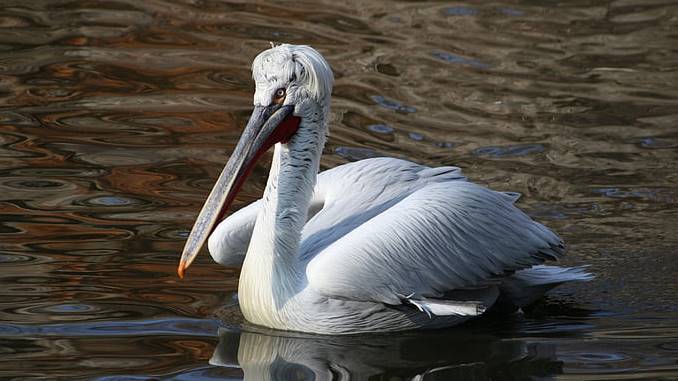
A dalmatian pelican is a water bird with a long beak belonging to the pelican family. This species is the biggest freshwater animal in this family and the largest flying bird on Earth. Interesting, right?
They inhabit estuaries, wetlands, deltas, rivers, and lakes predominantly and mainly feed on aquatic crustaceans, small reptiles, eels, catfish, and amphibians.
Unlike the fierce appearance with the scarily extensive bill, these monogamous animals love their mates so much.
They’ll find a partner, and that partner remains the same for their whole lives. The couples live, migrate, and raise chicks together.
American Avocet
Our favorite name is the delicate, elegant American avocet. Its graceful appearance is thanks to the mildly up-curved, amazingly thin, extensive beak.
When searching for insects and crustaceans, the animal swishes the beak through the shallow water about eight inches.
Sometimes, it shakes mud off the feet every time it steps to hunt for the prey. Don’t be fooled by its delicate, charming white look!
These birds use their bills for chasing prey and will cruelly attack predators, such as Northern ravens and harriers.
Kiwi
Despite the rough, dark brown feather, we still have a fascination for kiwi birds because it has the same name as our fav fruit!
Indeed, their hair acts as a superb camouflage, helping them stay unnoticed, particularly by wise predators. Isn’t it amazing?
The beak will be about ⅓ of the whole kiwi body. For instance, if the animal is 45 cm, that part will extend for around 15 cm.
A typical kiwi’s diet includes eels, amphibians, tiny crayfish, invertebrates, grubs, worms, and fruit.
Woodpecker
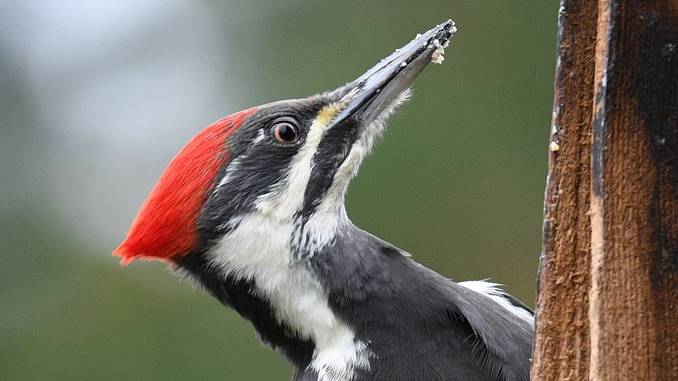
People can find woodpeckers around the globe except in extreme polar places, Madagascar, New Guinea, Australia, and New Zealand.
The four-centimeter beak assists these birds in penetrating trees’ wood and feeding on acorns, insects, pine seeds, sap, berries, and fruits.
Not only their mouths but their tongues are also long, allowing them to capture prey effortlessly.
If you see a woodpecker, it may be a sign of something about to happen. Check out our article on What Does It Mean To See A Woodpecker? to discuss more about it.
Kingfisher
Kingfishers live near rivers, ponds, and lakes. An average kingfisher has a mouth of about 2.8 inches, which helps it catch food, like tiny insects and fish.
Besides, the pointy claws on the paws are an excellent assistant when catching slippery creatures.
Sometimes, you can encounter ones with bills of up to three inches. These animals dive into the water using their wings for maximum speed and momentum when feeding.
After that, they utilize the flexible mouth to catch crayfish or fish hiding underneath the water surface.
Kingfishers can eat meat (bird of prey), and their meals mainly include tiny birds, frogs, mollusks, and crustaceans.
Roseate Spoonbill
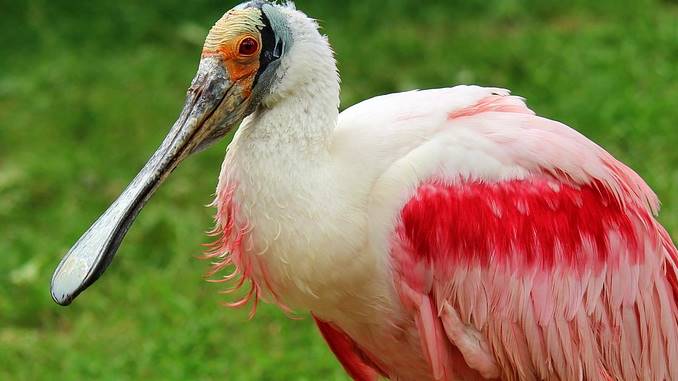
The spoonbill is among the most unique-beaked birds, and the roseate spoonbill belonging to this special family is no exception. This species thrives best in coastal and shallow freshwaters.
Here’s how the animal captures food: It walks on the water surface while moving its mouth from side to side and traps small creatures and items, like fish, aquatic insects, and crustaceans.
Roseate spoonbills’ most popular living regions are the Gulf Coast and Florida (marshy areas), where the populations have recovered since years of hunting.
Wood Stork
The wood stork is a small bird with long beaks of 17 cm (6.6 inches). This creature has pretty small swings, so it can not fly for an extended period.
However, nature makes up for this disadvantage in another way! Wood storks can house a large crowd of spearfish, crayfish, and crabs with a straightforward jab using their sizable mouths.
They search for fish under shallow waters (rivers and swamps) surrounded by muddy soil. There, tiny creatures swimming below the birds will leave trails, allowing them to follow and prey on easily.
Hudsonian Whimbrel
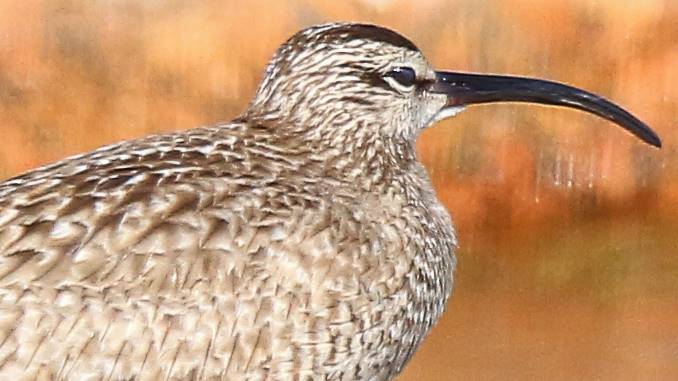
Hudsonian whimbrels are popular long-beaked creatures in Bolivia with an average mouth length of four to five inches.
They’re relatively large, featuring a curving, extensive, fragile bill. These creatures appear primarily in open habitats, such as salt marshes, beaches, and tundra (for mudflats and nesting)
Their exceptional mouths excel in extracting crabs and marine invertebrates in the mud or sand.
Like the American avocet, whimbrels may appear calm and delicate, yet they’re sustainable migrators, flying from wintering grounds to arctic nesting regions and vice versa.
Collared Aracari
The last name on this list, also a member of the toucan family, is present in various places, including Venezuela, Colombia, Ecuador, Panama, and Mexico.
Despite having a curved, thick, extensive mouth, this creature prefers omnivorous diets and doesn’t always hunt for meat. It feeds on dry and fresh fruits, insects, and eggs.
Their habitats run along wooded regions, like cacao plantations, forest patches, coffee plantations, forests, and wet lowlands.
Related: Bird With Red Eyes (19 Amazing Red-Eyed Birds)
Benefits of A Long Beak
Long-beaked animals generally take advantage of this outstanding feature for hunting.
The pointed tips and sharp edges are extremely helpful when cutting foods in half, spearing insects, or scooping up prey, making it more effortless to swallow.
Like the American avocet or kiwi, some animals use their slender bills to pry out shellfish and insects from the sand and mud and tear them to eat.
Others may use their beaks to work through the wood to create a house or nest (like Woodpecker).
Aquatic species often have sharp, stout bills consisting of a sizable pouch at the bottom that helps drain out moisture and collect fish.
Some also use their advantageous shaded bills to peel fruit and intimidate predators. Each species is born in a unique way for various purposes.
FAQ’s
What Do People Call A Bird With A Long Beak?
The most popular name people call creatures with large, extensive mouths is the Sword-billed hummingbird – a native bird to South America.
Aside from the mouth, a special characteristic of sword-billed hummingbirds is the diets of datura-rooted plants, like passion flowers or fuchsias.
Plants in heavy vegetation often feature long corollas, digging the sweet nectar deep in the soil. That’s where an extensive mouth plays the role.
Why Do Some Birds Have An Overgrown Beak?
Generally, an overgrown mouth occurs when the upper or lower beak grows beyond control, though the upper one commonly outgrows the latter.
This weird body part can result from abnormalities during development, nutrition imbalances, trauma, infection, and liver disorders.
Another weird condition flying creatures may suffer an ugly deformed mouth.
Deformed and overgrown parts share some characteristics and traits in common, but you should ask an avian beak expert for accurate scientific information.
What Birds Have Long Skinny Beaks?
Undoubtedly, the answer calls out the name of the American avocet – a gripping, elegant pet with an amazingly long, thin mouth curving slightly upward.
We can feel the delicacy coming out from its whole body, particularly when it elegantly sways and inspect the waters for food.
The Bottom Line
We’ve taken you through the lively world of the most stunning, graceful animals renowned for their incredibly long beaks.
It would be awesome to witness these beaks in real life, wouldn’t it? What are your favorite birds with long beaks?
Why not share this gripping information with friends and family so they can enrich the knowledge of the flying creatures, alright?

Hi, my name is John, and I’m an animal lover. I’ve been fascinated with the animal kingdom since I was 5 years old, and my passion keeps growing bigger as I age. And this blog is where I share my researches and passion with animal lovers all around the world.
